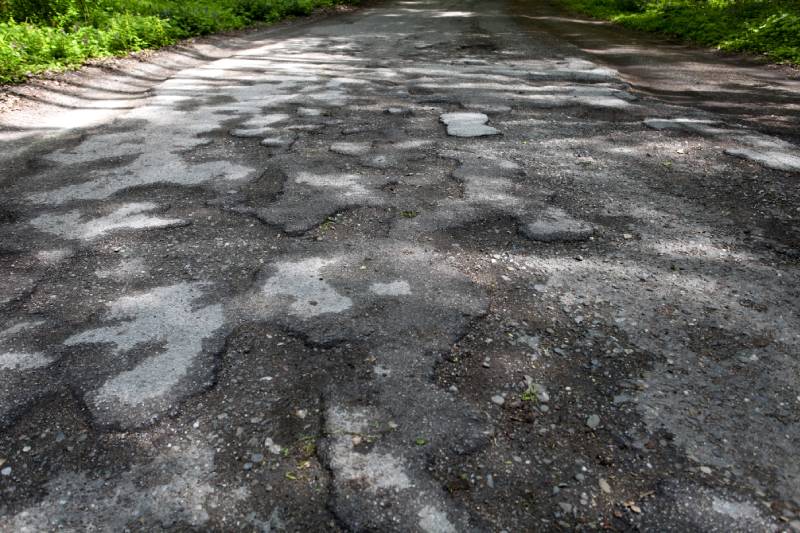Commercial asphalt surfaces endure significant stress due to heavy traffic and changing weather conditions. Over time, these factors contribute to the development of potholes. Potholes not only pose a risk to safety but also have a negative impact on the overall aesthetics and functionality of commercial areas. Therefore, implementing effective repair techniques is crucial to maintaining a safe and functional commercial environment.
Regular maintenance and timely repairs are essential in preserving the integrity of commercial asphalt surfaces. By addressing potholes promptly, businesses can prevent accidents and minimize vehicle damage. Additionally, maintaining smooth and well-maintained surfaces enhances the overall experience for customers and visitors.
In this blog post, we will explore the best practices for repairing potholes in commercial asphalt. By following these steps, businesses can ensure long-lasting repairs and provide a safe and aesthetically pleasing environment for all stakeholders.
Inspecting and Preparing the Pothole
Thoroughly assessing the pothole is the first step towards a successful repair. It is crucial to conduct a detailed inspection to understand the size and depth of the pothole accurately. This assessment will help businesses determine the appropriate repair method. For larger and more extensive potholes, additional preparation steps may be required, such as saw-cutting and removing damaged sections of asphalt. By evaluating the extent of the damage, businesses can plan and execute an effective repair strategy.
Cleaning and Priming the Pothole
Before applying any repair material, it is essential to clean the pothole thoroughly. This cleaning process involves removing debris, dirt, dust, and loose material from the pothole’s surface. Effective cleaning techniques include using a stiff broom, high-pressure air, or water to ensure proper adhesion of the repair material. In addition to cleaning, priming the cleaned surface is crucial. Applying a primer helps enhance the bond between the existing asphalt and the repair material, improving the longevity and durability of the repair.
Choosing the Right Pothole Repair Material
Selecting the appropriate pothole repair material is crucial for a durable and effective repair. Different types of asphalt repair materials are available, including cold patch asphalt, hot mix asphalt, and polymer-modified asphalt. When choosing the repair material, factors such as climate, traffic volume, and pothole size should be considered. In colder climates, cold patch asphalt is often preferred as it can be applied in lower temperatures. It is also important to match the repair material to the existing commercial asphalt to ensure a seamless and long-lasting repair.
Filling and Compacting the Pothole
Accurate application and proper compaction of the repair material are key steps in achieving a smooth and even surface. After selecting the appropriate repair material, it should be applied uniformly to the pothole, slightly overfilling it to account for compaction. The repair material should be compacted using suitable techniques, such as a hand tamper or a vibratory plate compactor. During the compaction process, it is crucial to remove any air pockets and achieve proper density. Repeat the compaction process until the repair is level with the surrounding asphalt, ensuring a seamless transition.
Sealing and Finishing the Repair
After filling and compacting the pothole, it is essential to seal the repair to prevent water infiltration and further damage. Applying a quality sealant to the repaired area creates a barrier against moisture, oils, and other contaminants, ensuring the longevity of the repair. Additionally, smoothing and leveling the surface is necessary to achieve a seamless finish that matches the surrounding commercial asphalt. This can be accomplished using a hand trowel or a lute. It is important to allow sufficient curing time before reopening the area for traffic to ensure the repair sets properly.
Regular Maintenance and Preventive Measures
To maintain the long-term integrity of commercial asphalt surfaces, regular maintenance is crucial. Scheduling routine inspections helps identify emerging potholes or signs of deterioration promptly. By addressing these issues in their early stages, businesses can prevent potholes from enlarging and becoming more expensive to fix. Implementing preventive measures like crack sealing, sealcoating, and regular cleaning minimizes the formation of potholes and extends the lifespan of the asphalt. Engaging professional asphalt maintenance services can provide expert guidance and efficient solutions for commercial asphalt repair and maintenance.
Conclusion
This blog post has provided a detailed guide on the best practices for repairing potholes in commercial asphalt. By following these steps and implementing regular maintenance measures, businesses can ensure safe and smooth surfaces, enhancing the overall experience for customers and visitors. Effective pothole repair not only prevents accidents and vehicle damage but also demonstrates a commitment to maintaining a professional and well-maintained commercial environment. Remember, proactive maintenance and prompt repairs are key to preserving the integrity and functionality of commercial asphalt surfaces.
By adhering to these best practices and prioritizing regular maintenance, businesses can create and maintain safe, durable, and visually appealing surfaces, contributing to a positive experience for customers and visitors alike.






